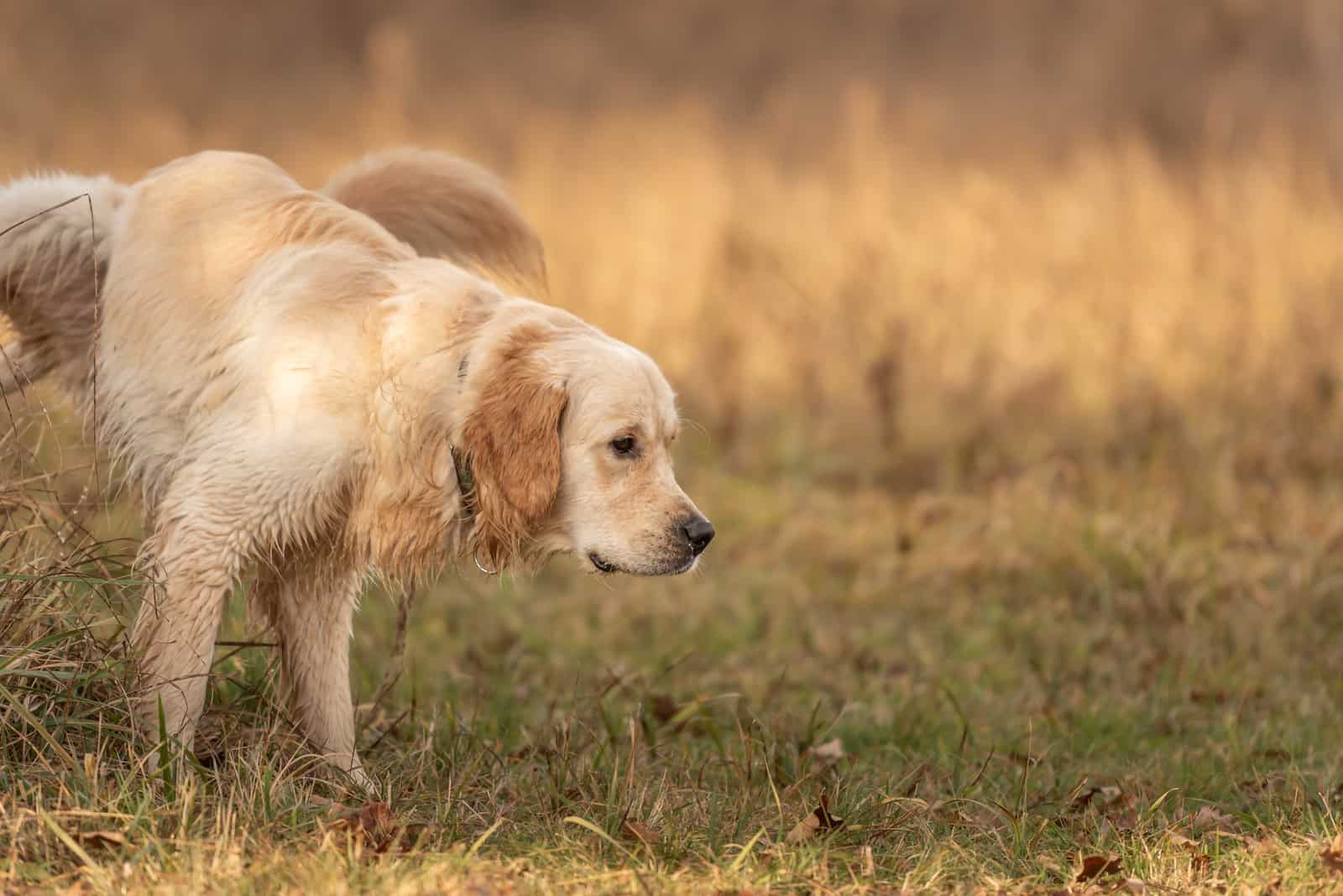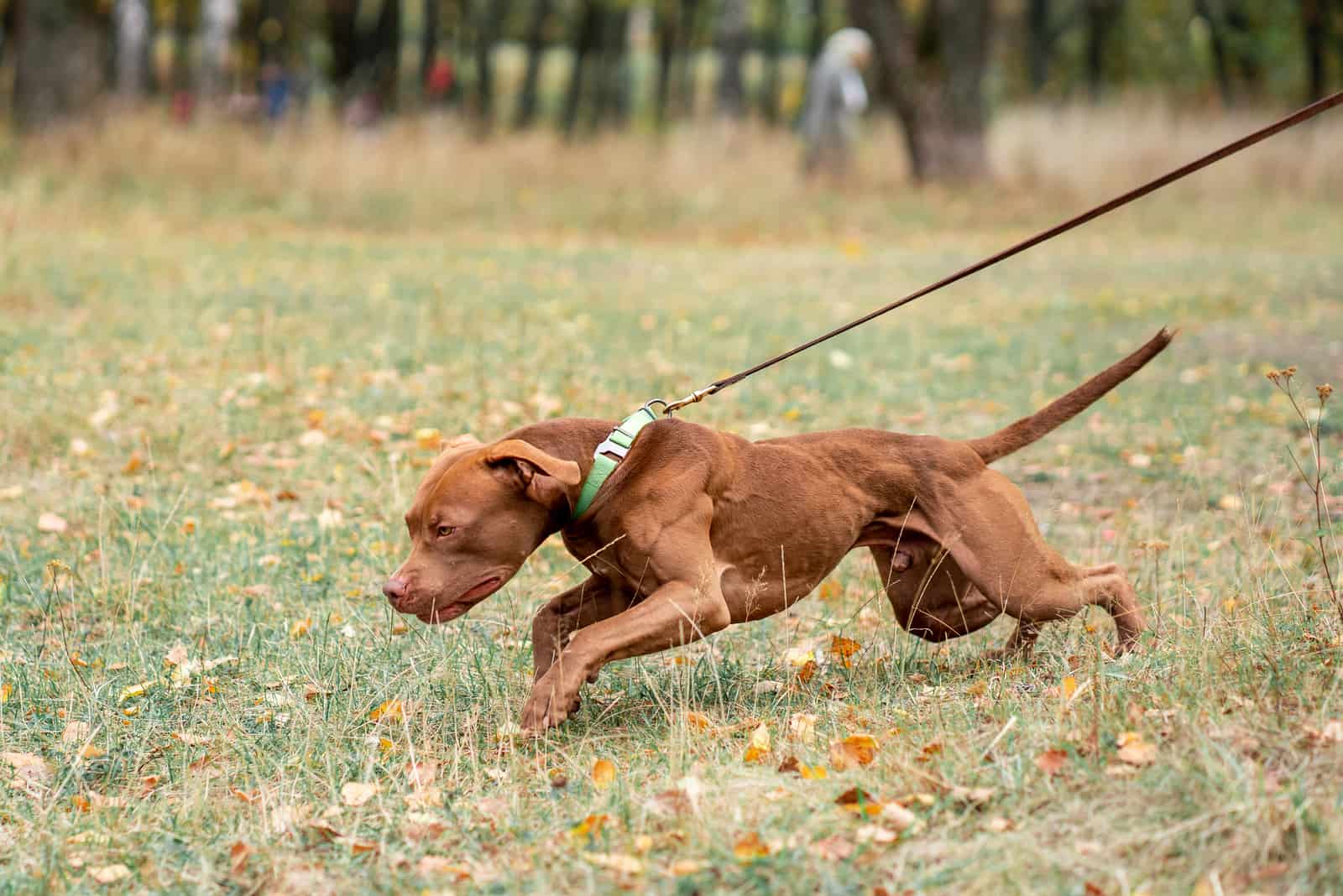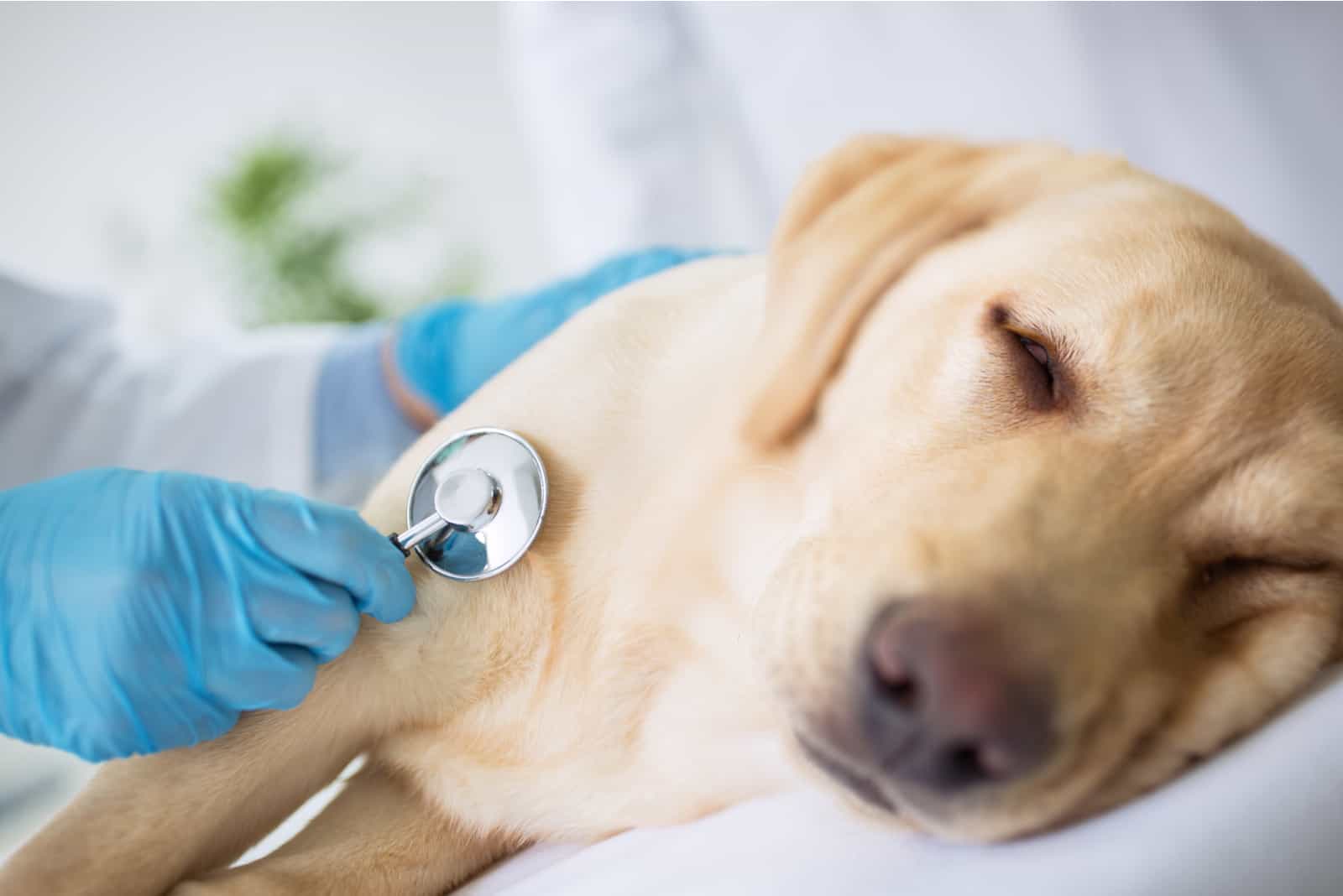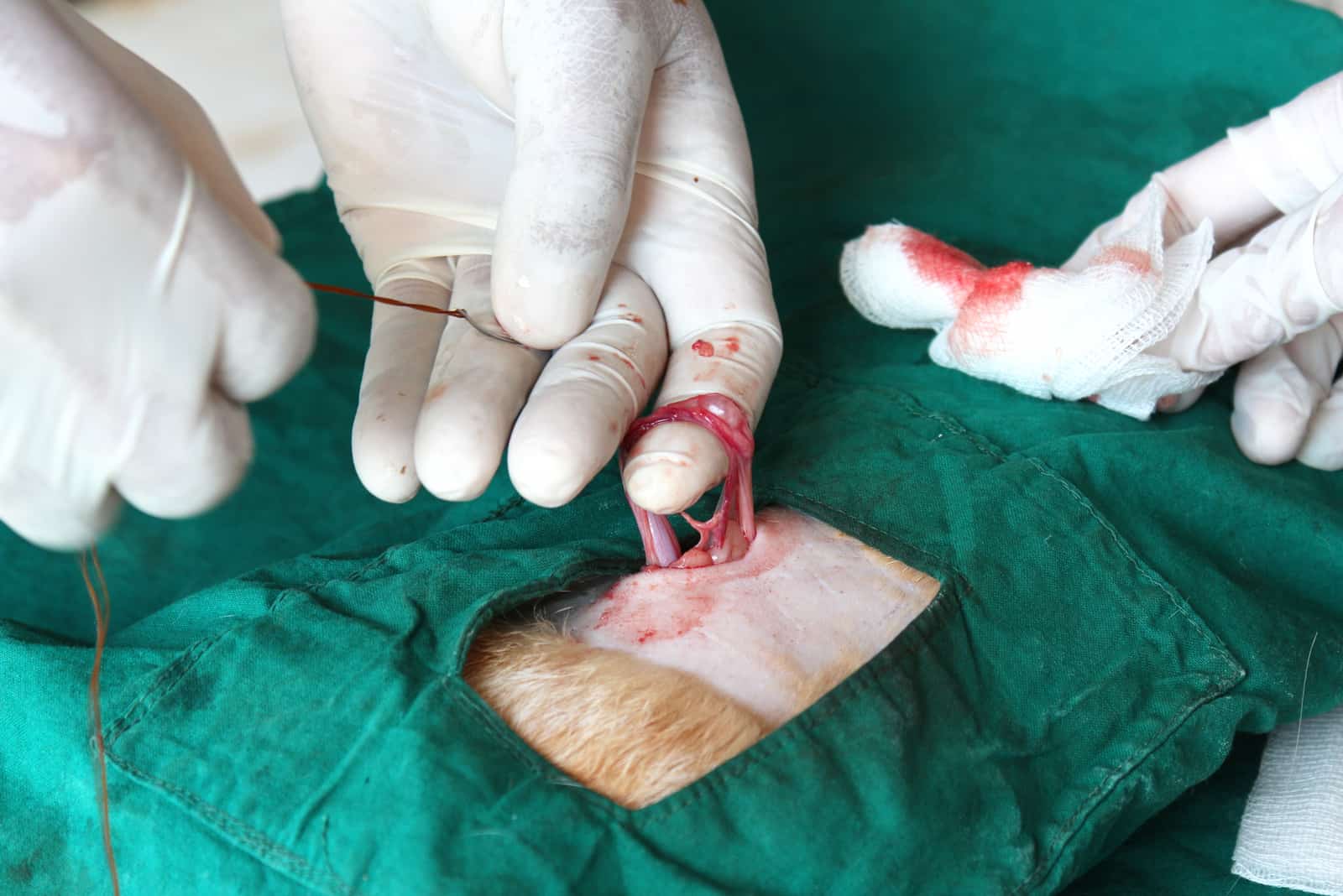As the famous pawet Shake-a-paw-speare once said: “ To neuter or not to neuter ? That is the question.”
If you’re a lucky owner of a male dog , you have most likely heard about the neutering procedure. So, what is this so-called neutering ?
When a male dog undergoes neutering surgery means that he is getting its family jewels removed. A more profound way to describe this surgical procedure is to say that neutering or castration is the surgical removal of testicles.
Although some dog owners believe that neutering is a cruel thing to do, a majority thinks otherwise. Neutering has been scientifically proven to reduce the risk of developing major health issues like testicular cancer and prostatic disease in older dogs.
In contrast to that, female dogs that go through a spaying procedure (removal of ovaries ) are less likely to develop mammary gland tumors or pyometra ( uterine infection ).
However, if neutered way too early, a male dog is at higher risk of developing orthopedic health problems .
How to know when’s the right time to neuter your male dog ? What are the most common signs your dog needs to be neutered? Is neutering the right thing to do?
In this article we will break down each sign your intact male dog shows that might be a signal for a veterinary appointment. We will also tell a thing or two about the benefits and problems of dog neutering .
Behavioral Signs
The most frequent question that curious dog owners ask is “How do male dogs act when not neutered?”
The first to change is the behavior of a male dog .
Higher levels of testosterone hormones in male dogs lead to behavioral changes that they start to exhibit on a daily basis. Specifically, a male dog shows signs that it wants to mate whenever he senses a female dog ’s pheromones.
This particular behavior of unneutered dogs is triggered by female dogs in heat. Female dogs go through a heat cycle , while male dogs only show the urge to mate.
Even though it is considered incorrect, we usually say that a “ male dog is in heat” when we notice he started showing these signs:
1. Humping

Humping — a common behavior in dogs that can be very embarrassing for the owners.
Although most believe that humping is a form of sexual behavior (which it usually is), it can also be instinctual or out of boredom .
Both male and female dogs have been seen doing this, but humping is most commonly linked to intact male dogs. Read more on reasons why your female dog would hump all of a sudden.
If not in contact with a female dog , intact male dogs tend to hump air, blankets, toys, and sometimes other dogs and humans. Now, this can become a very big problem. I mean, no one wants to experience this annoying behavior. Humping other dogs may lead to dog fights or unwanted pregnancies.
Plot twist! I have noticed that some neutered male dogs and cats still show this kind of behavior. Since testicles are removed, there is no hormonal trigger to humping behavior. In this case, humping is either a socially learned behavior , a sign of stress or anxiety , or expression of dominance.
2. Escape And Roaming
Like it or not, all dogs are great escape artists.
When duty calls, a male dog will put its escape skills to use. He is on an important mission , and that mission is to find the love of his life.
So, this is where escaping and roaming takes place. You’d be surprised to realize the lengths that your unneutered male dog will go to just to meet with his significant other. I mean, there is no stopping a dog from jumping fences when the heat cycle kicks in!
RELATED: 4 Steps To A Chicken Wire Dog Fence For Your Canine Houdini
When levels of testosterone are at their peak, an intact male dog roams around, following the female dog ’s scent. You may notice that he takes particular interest in areas a female dog has been to .
When a female dog’s heat cycle reaches its end, the levels of testosterone in an intact male dog gradually decrease. Thus, escaping and roaming attempts also decrease.
Contrary to that, if a neutered dog escapes and roams often, this might be a sign of boredom or fear of the place he is in.
3. Urine-Marking

“I peed on it, so it’s mine now.”
All is said. Urine-marking is when a male dog pees on a specific area to show dominance. It is not necessary a form of canine sexual behavior, but it can be.
Now, fire hydrants for dogs are heavenly objects they simply must pee on. While it’s not a big deal when they do this outside, it can be a huge deal when male dogs start peeing on your household items.
Dog’s urine color and smell can be a real nuisance for dog owners who have troubles with their male dogs urine-marking in the house . Especially if you own two unneutered male dogs that live in the same house.
Neutered male dogs are less likely to show urine-marking behavior because they do not feel the need to “compete” with other male dogs .
4. Aggressive Behavior

Aggressive behavior in dogs can be a sign of bad upbringing and insufficient socialization. Aggression in dogs comes in different sizes and shapes. But, the one we want to talk about today is aggression in intact male dogs.
It is known that intact male dogs have rather aggressive tendencies towards other (male) dogs because they are competing for territory or for females. Mind you, not all intact male dogs behave like this.
We can blame it all on high levels of testosterone . Well, not all, because aggressive male dog behavior is not alone triggered by this hormone. There might be an underlying cause for this unwanted way of acting.
When pet owners realize that their dog is starting to develop aggressive behavior, they usually turn to pet trainers. Perhaps a better idea is to talk to the vet and see if any medical issues are the reason behind this behavior.
Socializing an aggressive dog will take time. Neutering won’t take as much time but it will help lower the levels of testosterone , making your Fido calm down a bit.
Normally, neutering alone doesn’t help correct behavioral problems . Dog owners must work with their fluffy troublemakers to make things better.
5. Stubbornness

Is there anything more annoying than your dog not listening to anything you tell it? I bet all dog owners experienced extreme stubbornness from their pooch at least once.
Stubbornness is a doggie personality trait that is seen in some breeds more than the others. From what I’ve seen, most affectionate pet owners spoil their fur balls. So, sometimes, stubbornness can be a result of that.
As a sign your dog needs to be neutered, stubbornness is shown through leash pulling, difficulty to train, and disobeying commands.
Besides improper dog training , stubbornness can derive from high levels of testosterone . Basically, intact male dogs have more important business to attend to than to listen to your foolish commands!
Signs That Indicate Health Problems

Now that we mentioned the most common signs your dog needs to be neutered, it’s time for a more serious talk. Behavioral signs are mostly noticeable. Health problems are not always visible to the naked eye.
During its lifetime, an intact male dog may develop health issues that are associated with the genital system. These health issues may not show until an unneutered male dog reaches his senior years.
Some dogs are more prone to certain diseases. And this is because of their genetic background. So, bad genes = higher risk of developing a disease.
1. Testicular Cancer
Testicular cancer is the most dangerous threat of unneutered male dogs . It has the potential to spread to neighboring tissue and in most cases it is lethal.
Unneutered adult dogs are more prone to developing testicular cancer than younger dogs. Genetics plays its part as well.
Removal of testicles = no chance of testicular cancer — because there are no testicles !
2. Prostatic Disease
A male dog ’s prostate is a gland within the urinary tract. It is regulated by the testosterone hormone. That said, this gland produces chemical compounds that are found in male dog ’s semen.
Prostatic disease in dogs is often linked to the enlargement of the prostate gland. As it grows, the prostate puts pressure on surrounding parts of the urinary tract.
An enlarged prostate may put pressure on urethra, causing incontinence. It may also start to interfere with the digestive system obstructing the act of pooping.
3. Cryptorchidism
Cryptorchidism in male dogs is a condition when one testis stays within the abdomen. A cryptorchid male dog has only one testis in his scrotum.
Normally, testes “fall down” into the scrotum by two weeks of age . If they fail to place themselves in the scrotum within eight weeks of age, the male puppy is considered a cryptorchid.
Although this condition usually does not show acute signs, it can become very dangerous throughout time and require surgical removal — neutering .
4. Scrotum Rashes
Scrotal skin in male dogs is very sensitive. It is usually covered with less hair than the rest of the dog’s body. When both testes are inside the scrotum , the delicate skin is stretched and exposed to the surroundings.
Rashes of the scrotum may develop when your dog plays outside or licks its genitals often.
When testes are removed from the scrotum , as it heals, the skin inverts and flattens down . This potentially prevents rashes and cuts.
What Is One Of The Most Common Reasons To Have A Dog Neutered?

When you think about it, health reasons to have a dog neutered overweigh the behavioral reasons. So, the most common reason to have a dog neutered is to lower the risk of developing health problems .
Neutering also prevents bad genes from passing to new litters. For example, dogs that are prone to hip dysplasia , PRA, cataracts, and obesity , may pass these health problems to their offsprings. This is what dog breeders are very cautious about.
Dog owners who are yet to decide to neuter their dog often ask me “Are dogs calmer after being neutered?”
Well the answer is yes, and no.
Neutering will prevent your male dog’s need to roam and escape. It will lower his urge to mark its territory. However, neutering will not necessarily calm him down , especially if you own a working dog breed.
When your intact male dog escapes, chances are that it will mate with a female dog . If you neuter your dog, you will prevent unwanted pregnancies that are to blame for pet overpopulation.
At What Age Should A Male Dog Be Neutered?
Why is this an important question? Because neutering a male puppy too early can lead to developmental health problems .
Typically, male puppies are neutered between six and nine months of age . This can depend on the dog breed.
For example, large breed dogs like Golden Retrievers are known to mature later than small dogs . That being said, neutering a large or a giant dog can be done at 11 to 14 months of age .
Normally, dogs undergo spay/neuter procedures after their first heat.
Do Male Dogs Change After Being Neutered?
Male dogs ‘ mischievous behavior generally improves after they have been neutered. However, desired behavioral changes are not noticeable straight after surgery . It still takes some time for the high levels of testosterone present in blood to decrease.
Right after surgery, a dog might feel anxious or afraid. He may show aggressive behavior until he comes to terms with losing its family jewels!
After a few days, a neutered male dog is calmer and happier. He can finally focus on himself rather than some cheeky female dog from the neighborhood!
Is Neutering Painful?
Neutering is done under general anesthesia. So it is not painful during the procedure because the dog is not aware nor does it feel anything.
Neutering can be painful a few hours up to a day after surgery . Professional DVMs make sure that a neutered dog receives pain killers and proper supplements.
Recovery from neutering may take up between two and three weeks.
To Sum It Up
If you don’t plan on producing puppies, neutering an intact male dog is a great idea. The health benefits of neutering overshadow the health risks.
The cost of neutering in the United States starts as low as $35 and can get up to $300, depending on the veterinary clinic. Besides that, organizations like ASPCA offer cheap spay/neuter procedures in order to promote health benefits and minimize pet overpopulation .
It takes balls to neuter a dog!
As a responsible dog owner , you must always think about your dog’s health and wellbeing. These signs your dog needs to be neutered might just help you understand the importance of male dog’s hormone for its health.
Besides neutering, keep up with regular vaccinations, health check-ups, and keep your pooch as happy as he can be!
Related Content
• Why Do Dogs Like Period Blood? Reasons And Solutions!
• Dog Suddenly Scared Of Something In House: 9 Common Reasons
• Can Dogs Get Sexually Attracted To Humans? What You Need To Know
